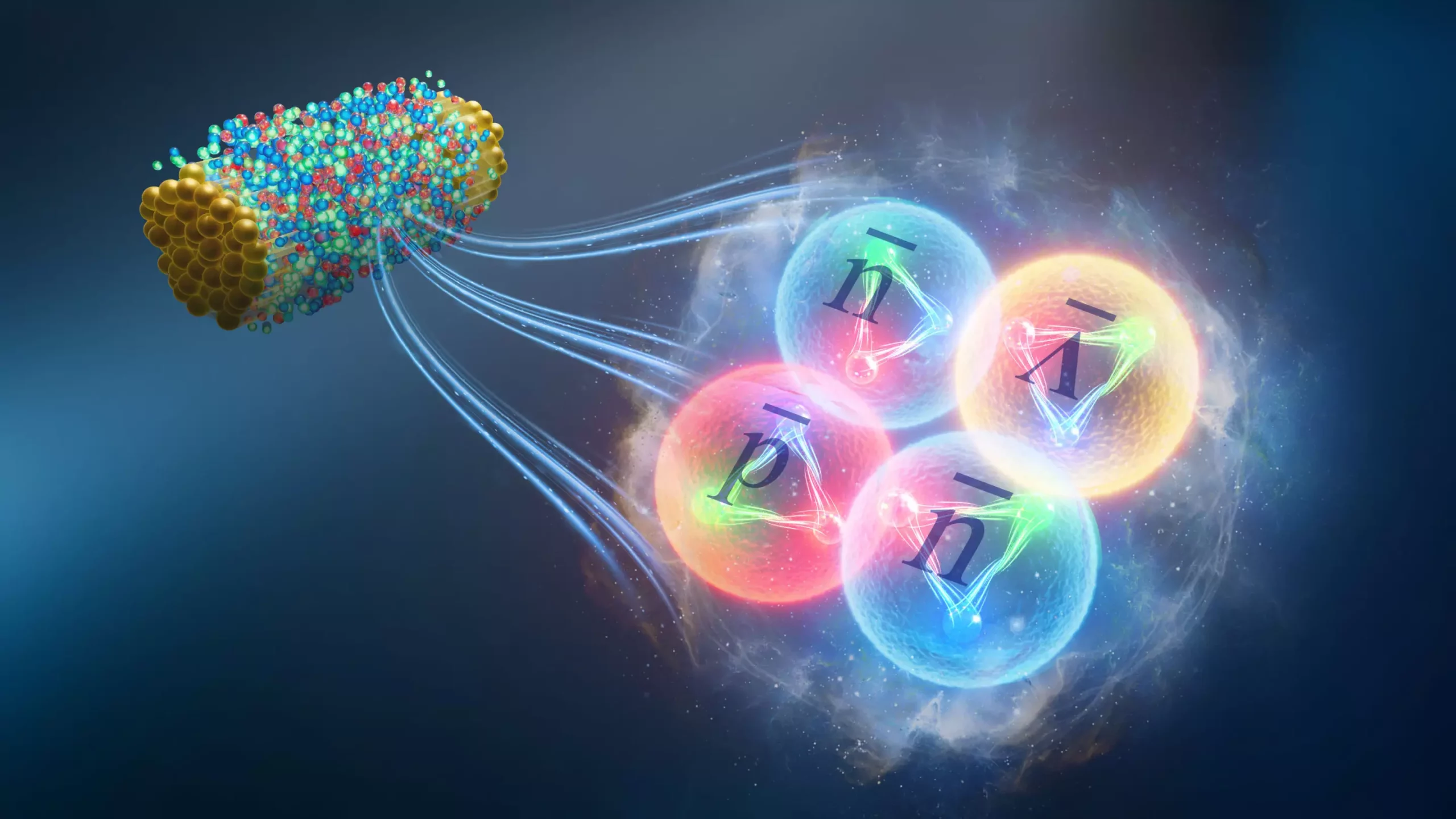The exploration of antimatter, the enigmatic counterpart to ordinary matter, has long intrigued physicists seeking to unravel the mysteries of our universe. A recent breakthrough at the Relativistic Heavy Ion Collider (RHIC) has shed light on this perplexing topic, revealing an exotic form of antimatter known as antihyperhydrogen-4. This discovery stems from an intricate analysis of particle collisions, which recreate conditions similar to those immediately following the Big Bang. As scientists delve deeper into the properties of matter and antimatter, questions arise about the fundamental asymmetry in our universe—the surprising prevalence of matter over antimatter.
Located at Brookhaven National Laboratory, the RHIC serves as a cutting-edge facility for nuclear physics research, funded by the U.S. Department of Energy. By accelerating heavy ions to nearly the speed of light, RHIC generates extreme conditions that lead to the production of a quark-gluon plasma, a state of matter thought to have existed shortly after the Big Bang. In this environment, protons and neutrons melt into their constituent quarks and gluons, creating a vast array of new particles. This setting allows physicists not only to examine familiar particles but also to search for elusive antimatter forms, making it an ideal laboratory for studying the fundamental forces that govern the universe.
The recent discovery of antihyperhydrogen-4 came from painstaking analysis performed by the STAR Collaboration, a team of physicists working at RHIC. This exotic antinucleus is composed of four antimatter particles: an antiproton, two antineutrons, and an antihyperon. The STAR team employed a sophisticated, large-scale particle detector to analyze collision remnants, culminating in a deeper understanding of the behavior of these antimatter particles. Despite the known equality of mass and charge properties between matter and antimatter, the underlying mechanisms that govern their production and decay continue to hold profound significance.
The discovery process involved careful tracking of the decay products of antihyperhydrogen-4. By looking for correlations between previously identified antihypertriton and antihelium-4 particles, the researchers managed to identify events suggestive of antihyperhydrogen-4’s presence. Actualizing this discovery in a sea of particle data required intricate algorithms and a keen understanding of particle physics, emphasizing the meticulous nature of modern scientific research.
In light of this discovery, the question remains—why does our universe appear to be made predominantly of matter? The prevailing hypothesis suggests that matter and antimatter were produced in almost equal amounts during the universe’s genesis, yet some process must have led to the observed asymmetry. Investigating the properties of newly discovered antimatter nuclei might provide insight into the mechanisms that tipped the scales in favor of matter.
As part of this ongoing exploration, the STAR scientists conducted comparisons between antihyperhydrogen-4 and its matter equivalent, hyperhydrogen-4. Despite expectations, their findings revealed no significant differences between the decay rates of the two, suggesting a strong form of symmetry remains intact. This outcome, while seemingly mundane, necessitates a careful reevaluation of theories attempting to address the fundamental imbalance between matter and antimatter.
The implications of these discoveries stretch far beyond mere academic interest. Understanding the characteristics of antimatter could unlock new realms in particle physics, shedding light on fundamental forces and interactions. The STAR team is now poised to measure the mass differences between particles and antiparticles, a crucial step in expanding our understanding of the universe. Investigations into these differences could lead to further revelations about the elusive nature of dark matter and dark energy, two predominant forces that appear to govern the universe’s evolution.
The discovery of antihyperhydrogen-4 marks a significant milestone in the quest to understand our universe’s fundamental fabric. While the persistent agreement between matter and antimatter decay properties may not have unveiled the answers to cosmic questions, it reassures the scientific community of the reliability of current models. As researchers continue to explore the tantalizing realm of antimatter, each revelation brings us one step closer to comprehending the delicate balance that shapes our cosmos—an endeavor that promises to redefine our understanding of existence itself.

